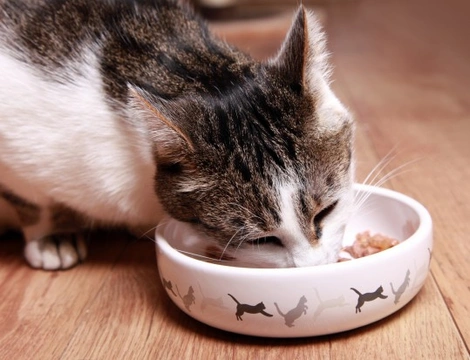
How to Feed a Kitten That's a Fussy Eater
Kittens can be notoriously fussy eaters which can be quite a worry for their owners. When they are weaned away from their mothers, kittens need to be fed a selection of foods which helps them develop a taste for a wide variety of things. However, a kitten that's fed the same type of food when they are weaned, may well turn their noses up at anything that's unfamiliar later on in their lives.
Well Balanced Varied Diets Fed at an Early Age
Kittens that are fed a well balanced yet varied diet from a young age helps them develop various tastes in food. It helps them get used to different sources of protein which is a very good thing. Kittens need to also learn about different textures and flavours which in turn helps reduce the chances of them turning into fussy or finicky eaters as they grow older. This can become a real issue with some cats refusing point blank to eat what's put down in front of them.
The Right Design Feed Bowl
Although very popular, plastic feed bowls are not the best choice for our feline friends, and you should also avoid any bowls that are too narrow. You need to bear in mind that cat's whiskers are incredibly sensitive so if they touch the side of their feed dishes, this may well put them off eating their food. It is not the food they don't like but rather the dish it's in. Plastic gives off quite an offensive smell to cats and can in some cases cause cats to suffer from rashes on their chins which is known as contact dermatitis.
Avoid Placing Feed Dishes Near Water Bowls
The other thing cats really do not like is having their food dishes placed next to their water bowls so you need to make sure that where they drink is well away from where they normally eat. It's also really important to clean out feed bowls with a detergent that does not give off any sort of strong odour and the same can be said of the surface their bowls are placed on.
Food Bowls Need to be Well Away from Litter Trays
It's also important to place litter trays well away from feed bowls and preferably this should be in another room altogether. If you feed your kitten in the same room as they have their litter tray, the chances are they will refuse to eat anything you put down for them.
Be Careful How You Mix Vitamins or Supplements in Their Feed
You should never mix all the vitamins and supplements you may be giving your kitten in one single meal, but rather spread this out over a few of them every day. The same can be said of any medication you may have to give your kitten. You need to bear in mind that all of these things will alter the flavour of their food which then means they may well develop an aversion to it. It is far better to put any medicine a different type of food, and one that is incredibly tasty as this helps disguise the flavour of the medication.
How to Introduce New Food to Your Kitten
When you want to introduce new food to a kitten, this has to be slowly and with patience. Some kittens may take a very long time to get used to different tastes. If your kitten has only been fed dry food, you should never leave this out for them to help themselves to at all times, this is a particularly bad way to feed cats or any other pet for that matter.
It is far wiser and better to feed two meals a day to your kitten making sure you feed at the same times morning and evening. If your kitten leaves any food in their bowls, remove this if they show no interest in finishing it off. You may feel a bit mean but it is far better to do this than to leave it down where it could get contaminated by flies.
If your kitten refuses to eat what you put down for them, take it away and although you may think you are starving your little feline friend, the process will be harder on you than on your pet. It is far better for them to be hungry at meal times because this will make them more likely to tuck into their food when you dish up their next meal. Hunger is a powerful motivator and one that will help get your kitten to taste and eat different types of food.
Increasing the Amount of New Food Gradually
You should increase the amount of new food you give your kitten very gradually whilst at the same time, decreasing the amount of the old food they are used to eating. Some people "hide" new food under old food as a way to mask a new flavour which works very well with some kittens but not with others.
Tempting Flavours do Help
You can always use some clever incentives as a way of tempting fussy eaters to tuck into new foods. One way is to use a tiny amount of "people" food like tuna or warm cooked chicken and literally drizzle this over the new food you would like your kitten to eat. You have to be careful not to use too much human food, unless you intend on feeding fresh food to your cat rather than specifically formulated kitten and cat food.
The thing to remember is that if you do feed a fresh diet to your kitten rather than commercially produced pet food, then you need to make sure they are getting all the vitamins, minerals, nutrients and especially taurine, a cat needs to stay healthy. If you have any concerns you should discuss things with your vet.



